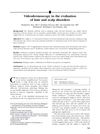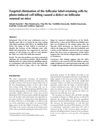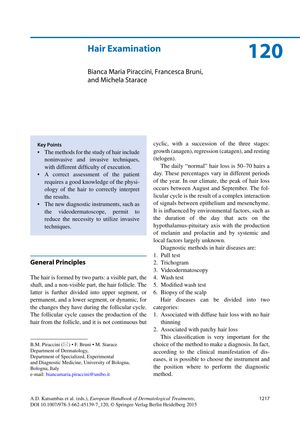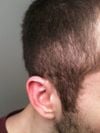TLDR Understanding hair structure and growth is key for diagnosing hair diseases accurately.
The document from 2015 discusses diagnostic methods for hair diseases, highlighting the need to understand hair physiology for accurate interpretation of diagnostic results. It explains the hair's structure and growth cycle, noting that losing 50-70 hairs daily is normal. Diagnostic techniques covered include the pull test, which is considered pathological if more than six telogen hairs are extracted; the trichogram, which is less used due to its invasiveness; videodermatoscopy, a noninvasive method for evaluating hair and scalp; the wash test and modified wash test for monitoring hair shedding; and scalp biopsy for certain conditions like cicatricial alopecia. The document also provides a table to aid in diagnosing hair diseases using these methods.
 304 citations
,
July 2006 in “Journal of The American Academy of Dermatology”
304 citations
,
July 2006 in “Journal of The American Academy of Dermatology” Videodermoscopy improves diagnosis of hair and scalp disorders and may reduce scalp biopsies.
63 citations
,
February 2003 in “Australasian Journal of Dermatology” Global photography and phototrichogram techniques are the best current methods for measuring hair growth.
 21 citations
,
May 2022 in “Frontiers in Cell and Developmental Biology”
21 citations
,
May 2022 in “Frontiers in Cell and Developmental Biology” Hair growth and health are influenced by factors like age, environment, and nutrition, and are controlled by various molecular pathways. Red light can promote hair growth, and understanding these processes can help treat hair-related diseases.
158 citations
,
February 2012 in “Journal of Investigative Dermatology” 95 citations
,
July 2006 in “British Journal of Dermatology” Vitamin D receptors in hair follicles change with the hair cycle, affecting hair growth.
 8 citations
,
September 2002 in “Genes to Cells”
8 citations
,
September 2002 in “Genes to Cells” Killing specific cells in hair follicles can lead to hair growth problems in mice.
122 citations
,
July 1994 in “Journal of Investigative Dermatology”





